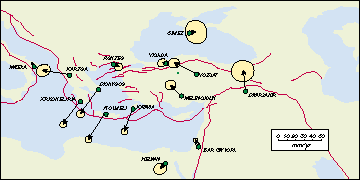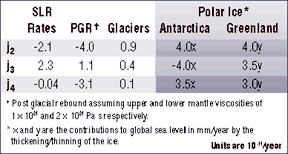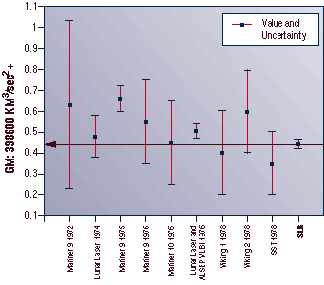SLR supports study of:
Solid Earth-Core/Mantle Interaction
 SLR provides mm/yr accurate determinations of station motion on a global scale in a geocentric reference frame. Combined with gravity models and decadal changes in Earth rotation, these results contribute to modeling of convection in the Earth’s mantle by providing constraints on related Earth interior processes.
SLR provides mm/yr accurate determinations of station motion on a global scale in a geocentric reference frame. Combined with gravity models and decadal changes in Earth rotation, these results contribute to modeling of convection in the Earth’s mantle by providing constraints on related Earth interior processes.
 Long-term SLR data, over decades, provides precise constraints needed to decouple some of the complex interactions at the core/mantle interface.
Long-term SLR data, over decades, provides precise constraints needed to decouple some of the complex interactions at the core/mantle interface.
Fundamental Physics
 Precise measurements of motion of near-Earth satellites and the Moon is a fundamental tool in the study of general and special relativity and for the determination of GM, the product of the gravitational constant and the mass of the Earth.
Precise measurements of motion of near-Earth satellites and the Moon is a fundamental tool in the study of general and special relativity and for the determination of GM, the product of the gravitational constant and the mass of the Earth.
LLR tracking of corner cube retroreflectors on the moon has verified the Equivalence Principle of General Relativity. SLR measurements to two laser satellites in special orbits (i.e., LAGEOS 1 and 3) has been proposed as an effective means for measuring the Lense-Thirring "drag" of the reference frame.
Scale
 SLR measurements of Lageos have provided the most accurate measurement of GM, and have confirmed that it does not change secularly.
SLR measurements of Lageos have provided the most accurate measurement of GM, and have confirmed that it does not change secularly.




